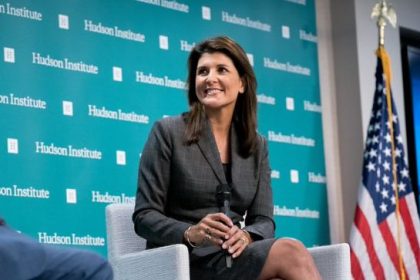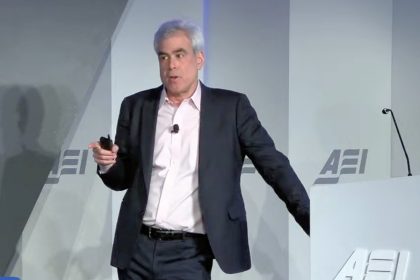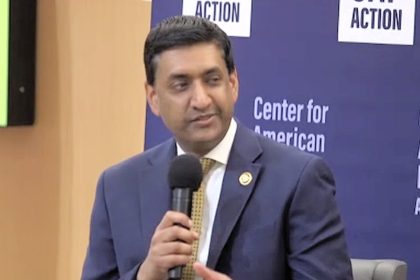Third Way Finds Build Back Better Provisions Would Lower Families’ Costs by Thousands

SAN ANTONIO — Third Way, a D.C.- based think tank, released an analysis of the Build Back Better Act on Wednesday that predicts a two-parent family of four would get a tax cut and have lower costs of up to $7,400 from its provisions when fully phased in.
Middle-class tax cuts and cost protections for families supplied by the legislation would also lead to lower costs of as much as $15,000 for a single mother of two children, according to the report.
The Third Way report analyzes four key provisions of the legislation: the Child Tax Credit, child care cost caps, the expanded Affordable Care Act premium cost caps, and closing the Medicaid coverage gap in the dozen states that have yet to expand.
The analysis applies these cost-saving provisions to six unique but conventional family models in each state and Washington, D.C. The report relates how the savings would affect a family of four earning the two-parent-with-child median income in each state. It then reapplies them to 50% of the median and 150% of the median while doing the same with a single-parent family.
“Democrats’ Build Back Better Act includes a series of tax cuts and cost protections that will have an outsized effect on working and middle-income families with children,” authors Sergio Galeano, economic policy advisor, and Zach Moller, director of the economic program, said in the report. “We calculated what four of the most significant provisions — the Child Tax Credit, child care cost caps, expansions to the Affordable Care Act, and expansions of Medicaid — would mean for six typical families in each state and the District of Columbia.”
Meaningful Methodology
For consistency, the authors estimated values under the assumption that each family has two children between the ages of two and seven. Not included in the calculation are other benefits families could receive, such as universal pre-K, new housing subsidies or SNAP benefits.
Families of different sizes could see similar benefits under the bill’s provisions, although they were not included in the report for simplicity’s sake. The analysis also excludes the increased Earned Income Tax Credit set aside for workers with no children.
“The Build Back Better Act provides historic and groundbreaking middle-class tax cuts and cost protections for families,” the authors said in the study. “Recent public opinion polling, however, found that most people thought they wouldn’t benefit directly from the legislation.”
In total, the study results in 306 representative families across the United States and their respective benefits under the provisions scrutinized by the report. The calculations apply to the four major provisions from the House version of the Build Back Better Act passed on Nov. 19.
Child Tax Credit Changes
The authors determined the child tax credit’s impact on each respective category of family by determining their tax liability. They did this by subtracting the 2022 standard deduction for married individuals and single heads of households from respective incomes. These calculations were used to establish the family’s taxable income before assessing each family’s total tax liability under the 2022 Federal Income Tax Brackets and Rates.
Taxpayers could claim a child tax credit of up to $2,000 for children under 17, and the credit is reduced by $50 for every $1,000 of income over $200,000. Should the tax credit exceed their tax liability, the family would get an additional child tax credit of up to $1,400, although the additional tax credit is limited to 15% of earnings over $2,500.
“The calculators allowed us to determine assistance for all but 64 of our 306 representative families,” the authors wrote. “For 53 families, the calculators determined they were eligible for Medicaid before and after the BBB Act and thus didn’t have any change in assistance. The remaining 13 low-earning families lived in one of the 12 states where Medicaid has not been expanded.”
When calculating the value of a cap on premiums under the Affordable Care Act, the authors assumed that one parent per family was applying for health insurance through the ACA exchange and coverage was unavailable to either parent through their occupation. To determine the value of assistance provided under Build Back Better, the authors used the cheapest gold plan in the corresponding ZIP code for each family available through HealthCare.gov as a metric.
Cost Caps for Child Care
Similarly, the authors determined the benefit from the child care cost gap provision by contrasting the average cost of the family’s child care expenses before and after cost caps became available. Under the act, the cap rate determines the maximum share of a family’s income they are required to cover for eligible child care expenses.
Families earning less than 75% of the state median income will pay 0% of their income on child care, while families earning between 100% and 125% of the state median income will pay between 2% and 4% of the cost cap rate. To be eligible for the provision, the highest percentage of earning a family may have is between 150% and 250% of the state median income, which would lead them to pay 7% of the cost cap rate while families earning more are not covered by the provision.
“The maximum dollar amount paid by each family towards child care was then calculated by multiplying the cost cap rate by their income,” the authors wrote. “To arrive at the family’s net child care savings, this number was then subtracted from the amount families would spend on child care without the assistance provided by cost caps. … Based on the data and family profiles we used, some higher-income families were not spending more on child care than their assigned cap based on income, and thus the benefits from this cap are zero.”
Galeano and Moller continued, “On the other hand, using state average child care expenses for low earners, especially for single mothers, yielded high expenses in comparison to their incomes. Thus, the net benefit for these low-earning families may appear higher than usual had there existed more nuanced data for child care expenses by state and income level.”
Reece can be reached at [email protected]























